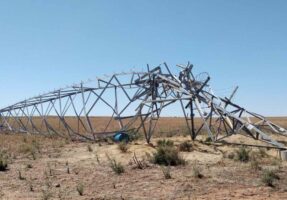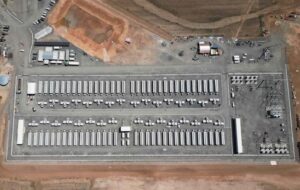Emerging clean energy technologies like energy storage, green hydrogen and digitisation platforms may be the key to dodging a global network infrastructure supply crunch and avoiding delays in the energy transition.
According to a new analysis published by analysts at ReThink Energy Research, restrictions in the supply of key materials are contributing to a looming ‘bottleneck’ in new transmission network infrastructure globally – as equipment suppliers scramble to secure supplies of copper, aluminium and other materials following supply chain disruptions.
Crucially, ReThink says investments in emerging clean energy technologies – such as batteries, air storage, green hydrogen storage and smart grid platforms can provide effective alternatives to help avoid a network infrastructure crunch.
“Alternative strategies such as energy storage and green hydrogen offer promising solutions. Energy storage technologies, ranging from batteries to compressed air systems, can alleviate grid strain by providing flexibility and reliability,” the report says.
“Green hydrogen, produced through electrolysis powered by renewable energy, holds immense potential as a clean fuel alternative. While its scalability hinges on overcoming initial cost barriers, investment from oil majors and advancement in electrolyser technology are driving progress in this space.”
Networks in developed economies – such as Australia – faced the combined challenges of maintaining existing, ageing network infrastructure while expanding network capacity to support the growth of renewables.
Australia plans around 10,000 kms of new transmission to support the switch to renewables, although it too is facing delays, partly caused by supply and manpower issues, and partly by social licence issues. It is also looking at “non-network alternatives” such as battery storage and air batteries.
The recent Victorian blackouts underscored the need for investment in alternative technologies, with the failure of transmission lines taking the 2,210MW Loy Yang A power station offline and cutting power to around 500,000 homes.
ReThink suggests that digital platforms can allow network operators to manage an evolving grid, including the transition to renewables and the growth in new demands on the grid.
“Digitising the grid emerges as a critical enabler of efficient resource management and integration of diverse energy sources. Utilities and grid operators must navigate a complex ecosystem of assets, including virtual power plants and electric vehicles, within a unified marketplace to optimise grid performance and ensure stability,” ReThink’s report says.
Australian network operators have already begun to integrate alternative technology solutions, including the deployment of big battery projects, as part of their network augmentation strategies to avoid the need for further sunk investment in poles and wires.
However, with some network upgrades unavoidable and many new transmission projects already in the works, there is stiff global competition for available supplies of equipment.
Last year, Transgrid signed a $100 million contract to secure the supply of crucial line equipment for the HumeLink and VNI West transmission projects years ahead of time, citing the international competition for supply.
ReThink points to recent impacts on Australian and Russian supplies of aluminium – which in the Australian case reflects forthcoming alumina refinery closures and uncertainty around electricity supply arrangements for smelters – as limiting the availability of key aluminium supplies for cable and line production.
US-based Aluminium giant Alcoa recently announced the forthcoming closure of the Kwinana alumina refinery in Western Australia, with around 1,000 jobs to be lost at the plant, which had been operating at a loss for some time,
Additionally, disruptions to global copper supply chains – including worsening global conflicts and the lasting impacts of the Covid-19 pandemic – have contributed to delays in the production and deployment of key network components like transformers.
Reflecting the tricky market conditions for copper – but the potentially profitable opportunity for producers – Australian resources giant BHP said in its half-yearly results update published on Tuesday that it expected the ‘decarbonisation mega-trend’ to bolster supply for copper in an otherwise tricky supply market.
“Extremely low global copper inventories, rising mine costs and the sector’s vulnerability to operational disruptions helped to establish a higher floor for prices than seen in prior downturns in OECD manufacturing,” BHP’s update said.
“Uncertainty in primary supply remains a key swing factor. In the medium and longer term, traditional demand (such as home building, electrical equipment, and household appliances) is expected to remain solid while the decarbonisation mega-trend is expected to bolster demand.”










